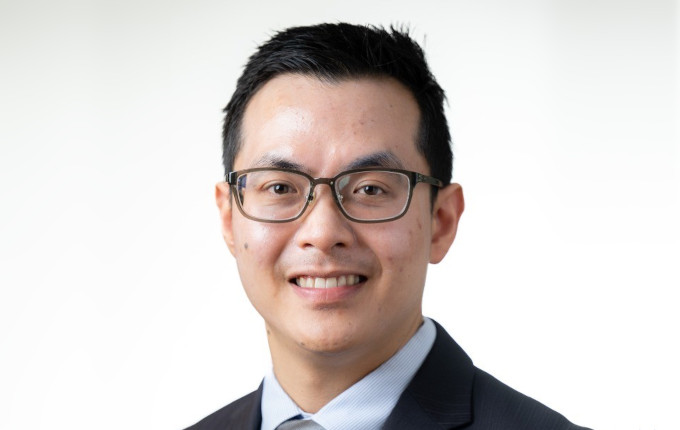LGT Crestone recently completed a comprehensive overhaul of its long-term, structural outlook and assessed the impact of this on its asset allocation strategy. We speak with Matthew Tan about the changes.
LGT Crestone recently completed its 2024 Investment Strategy Review, which saw a revision of its secular outlook for the next seven to 10 years. The review has resulted in adjustments in allocations to its equities portfolio, a customisation of fixed income weights for its different risk profiles and an increase in both alternative assets and cash allocations.
But a key change in the way the $34 billion private wealth firm views the investment landscape is the acknowledgement that the world has become vastly more complex and will require investors to really up their games going forward.
This has led to the introduction of a multi-asset risk factor framework that cuts through the complexity and provides a framework for building institutional-grade portfolios, while allowing the firm to express its views in a way that resonates with its clients.
“We did a full refresh of our investment strategy, where we’ve articulated our views on the multipolar world that we’re going into, a world with more populism, more nationalism, as well as the ongoing challenge of the global energy transition,” Matthew Tan, Senior Asset Allocation Specialist with LGT Crestone, says in an interview with [i3] Insights.

We did a full refresh of our investment strategy, where we've articulated our views on the multipolar world that we're going into, a world with more populism, more nationalism, as well as the ongoing challenge of the global energy transition
“And that has fed into our capital market assumptions. We have a higher growth forecast, we have high inflation forecasts and as part of that we are dealing with probably more uncertainty and more volatility. That is why we’ve introduced a multi-asset risk factor framework.”
The framework looks at how a broad range of risk factors – including gross domestic product growth, inflation and currency, as well as premia associated with equities, small caps and illiquidity – influence the various asset classes of a multi-asset portfolio.
It assesses whether the sensitivity of these asset classes to the various risk factors is likely to be low, medium or high, and it helps the investment team build better risk-adjusted portfolios in a potentially more volatile environment.
Although this is a significant change in how the team looks at the investment environment, it has not led to dramatic changes in the asset allocation, Tan says.
“We actually haven’t made too many changes in terms of our allocations and partly that is because LGT Crestone is already quite institutional [in its approach]. For example, we already have an overweight to international equities versus Australian equities on a strategic basis. What we’ve done this year is we’ve increased that a little bit more,” he says.
“We already had significant allocations to alternative assets. Across our client base, we probably have a 20 per cent allocation to alternative assets. That compares to, I’d say, single digits [across the broader wealth industry]. So we’re already quite heavily invested in alternatives and we’ve upped that a little bit more this year.
“The other big thing that we’ve done in particular to adjust to concentration risks in equity markets is we’ve further emphasised our house preference for active management. We have one of the biggest manager research teams in private wealth and they identified, even before I joined, opportunities within mid-caps, within places like Japanese equities, that were at the time less in the spotlight.
“It took us multiple months to do the research and due diligence to get a high-quality mid-cap manager, high-quality small-cap manager onto our product list. But we did that at the end of last year, which was timely in terms of socialising them with our advisers and broader client base and getting all the pieces in place for when our conviction in the space grew, which was around the middle of 2024.”
Last year, the returns from global equity markets were heavily dominated by the performance of the Magnificent Seven, a group of technology stocks that consists of Alphabet, Amazon, Apple, Meta Platforms, Microsoft, Nvidia and Tesla.
Part of LGT Crestone’s response to this increasing market concentration in the United States was to increase its exposure to mid-caps.
“As we got more and more cautious about the concentration risk in the US market, but also more and more constructive on the actual underlying US economy, we started pushing really hard into mid-caps,” Tan says.
“So a lot of our clients already had those exposures before the [US] election and, so far, they’ve benefited from that.”
LGT Crestone also increased its strategic cash exposures, partly to build a war chest for when market dislocations might occur in the future.
“A lot of people look down on [holding cash], but right now you’re getting a decent return and it gives you optionality. If you have a bit of cash [or even liquid fixed income] and there is a market drawdown, then you have the dry powder to lean into it,” he says.
“Besides, we don’t think we’re going back to the QE (quantitative easing) days [of zero interest rates] anytime soon, so you’ve got less opportunity cost for holding cash.”
The Future Fund
Tan joined LGT Crestone in August 2023, after more than six years working at the Future Fund, where he was a Strategist for Economics and Capital Markets. As such, he was heavily involved in the ground work behind the Future Fund’s position papers on the new investment order and the question of whether traditional portfolio construction was dead.
It is, therefore, unsurprising there are echoes of the Future Fund’s views on the importance of active management in a more volatile world and the fund’s interest in Japanese equities and small caps to be found in LGT Crestone’s revised long-term outlook.
But whereas the near future for markets might look more complex, more volatile and more challenging in terms of achieving high returns, this should not be interpreted as a prediction of a low-growth market environment.
Quite the opposite, in fact. Tan expects to see higher growth levels in the global economy, going forward, particularly compared to the post-Global Financial Crisis regime.
“I do try and emphasise to our clients that there will be more nominal growth because a lot of people get worried when they read the newspaper headlines about a more volatile world. But we stress that you’ve got governments and corporations that are spending trillions of dollars on all sorts of physical things,” he says.

I do try and emphasise to our clients that there will be more nominal growth because a lot of people get worried when they read the newspaper headlines about a more volatile world. But we stress that you've got governments and corporations that are spending trillions of dollars on all sorts of physical things
“For example, they are building factories in the Midwest [of the US], there is digitisation, logistics and the whole AI rollout. And of course, more defence spending as well.
“So there’s more money that is going into the economy. Yes, it will cause inflation and some of it will get wasted. That’s what happens when you have state intervention in the economy. But a decent amount of that spending will turn into productive [and profitable] things.
“And we want to be part of that. That’s why we’re spending a lot of our time thinking about how to build international equity portfolios, how to build alternative portfolios, because we want to get exposure to this growth.
“We don’t want to shy away from equities or from growth assets because we’re worried about more volatility. You just need to be more careful about how you do it. That’s partly why we really like active managers who have the expertise and capability to find the best opportunities in this new world we’re entering.”
Switching to Private Wealth
For many years, LGT Crestone has been building an institutional framework for investing under the leadership of Scott Haslem, Chief Investment Officer of LGT Crestone and a former UBS Chief Economist, and more recently Kevin Wan Lum, Deputy Chief Investment Officer at the firm and who has an extensive institutional investment background, having worked at a number of super funds and a state investment organisation.
This has made the transition for Tan much easier. But he also acknowledges there are a number of key differences between the institutional and private wealth worlds.
“One of the big learnings in making the move from insto to private wealth is that the relationship you have with the clients, and being able to communicate what you think is best for them, is really pivotal,” he says.
“We’re not talking about a mandate or an aggregated pool of members’ savings. Here you have someone sitting across the table from you and they are entrusting you to manage their money. So it’s about building up that personal trust.”

We're not talking about a mandate or an aggregated pool of members’ savings. Here you have someone sitting across the table from you and they are entrusting you to manage their money. So it's about building up that personal trust
Often this means adjusting clients’ expectations of what a multi-generational, institutional-grade investment portfolio looks like. Many clients have amassed their wealth by building their own businesses and have done that very successfully.
But running a business that is focused on a single sector or product is very different to building a risk-balanced investment portfolio for the long term.
“When you put an institutional-grade portfolio in front of them that has 7 to 8 per cent per annum expected returns, it’s hard to compare that to, for example, 25 per cent internal rates of return [for an operating business]. So that has been a challenge to try and bridge that gap between a concentrated operating business mindset and a more institutional kind of approach to investing,” Tan says.
But as the baby-boomer generation gets closer to retirement, the need for a stable, risk-balanced investment vehicle becomes more pertinent to their circumstances.
“Some of our clients are in their 60s and they are starting to slow down. They have built this direct portfolio [of assets] and they want to pass it on to the next generation. But their kids or their grandkids might have no interest, or no time, to manage a large or direct book of family investments,” Tan says.
“So we’re having a lot of conversations with those kinds of clients in transition about safeguarding your family wealth over a long period of time and switching to a more disciplined approach.
“You give up a bit of return, but you get a smoother journey. Your descendants or your beneficiaries have less to worry about. And you can still compound. At 7 per cent returns, you will still double your money every 10 years and you can do that in an enduring, scalable and disciplined manner.”
__________
[i3] Insights is the official educational bulletin of the Investment Innovation Institute [i3]. It covers major trends and innovations in institutional investing, providing independent and thought-provoking content about pension funds, insurance companies and sovereign wealth funds across the globe.


